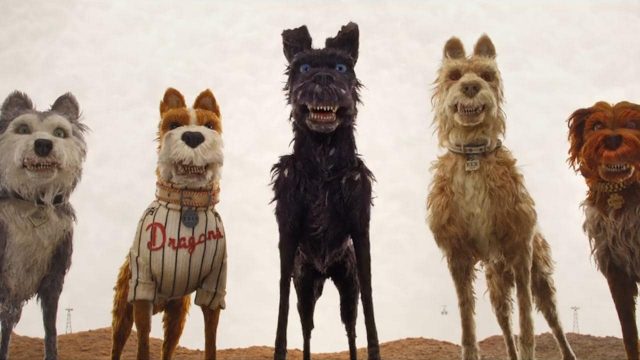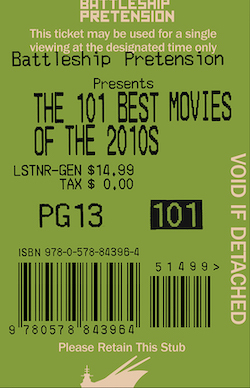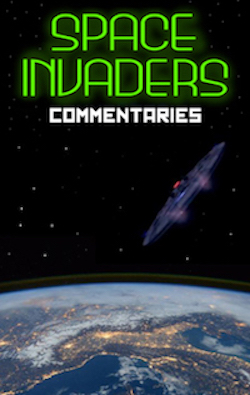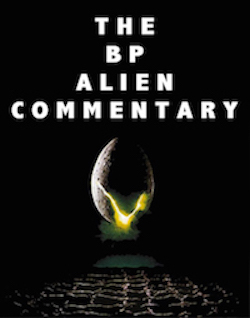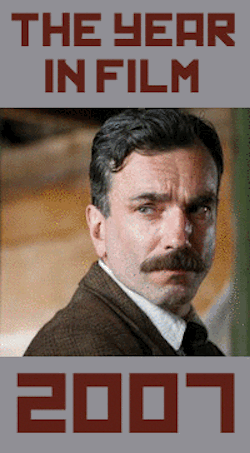Isle of Dogs: Primer-anian, by Josh Long
I really don’t want to be such a Wes Anderson apologist. I feel like it undermines my credibility as a critical filmgoer to like his movies as much as I do. Especially since he has, especially over the last ten years, become a major draw to so many casual film lovers. Wouldn’t it be better for my cinephile cred to dismiss him as derivative of the nouvelle vague and shift topic to Roman Coppola’s CQ? Trouble is, Anderson’s films connect with me in too many ways to ignore. I find almost all of them aesthetically pleasing, thought provoking, and emotionally satisfying. I know the whole “Wes Anderson thing” doesn’t work for everyone. So when I come out loving Isle of Dogs, sure, I might be biased. But I do honestly believe there’s a great film here for both hardcore fans and for people who have never heard of The Royal Tenenbaums.
STORY: The setting is the fictional Megasaki City, Japan, sometime in the future. Dogs, seen as dangerous and disease ridden, are banished to neighboring Trash Island by the evil (and cat-loving) Mayor Kobayashi (Kunichi Numora). Kobayashi’s ward Atari (Koyu Rankin) is not on board with the whole “No Dogs Allowed” decree and travels to Trash Island in hopes of recovering his beloved Spots (Liev Schreiber). He crash lands there on the island and relies on the help of five other dogs – Chief (Bryan Cranston), Rex (Edward Norton), Duke (Jeff Goldblum), Boss (Bill Murray) and King (Bob Balaban) – to help him find his lost pet.
FOR THE NON-FANS: The film’s story works well on two levels: first, there are the actual nuts and bolts. The set-up via prologue, the Odyssean progression across Trash Island and back to Megasaki, the concurrent political happenings on the mainland – all of it moves with an exciting pace and fits together smoothly. But more to its credit, the story is built on a detailed, well-constructed history. The world building here is something we should look for in more of our cinema, especially in a time when American studios are terrified to greenlight anything that isn’t an existing IP. It’s refreshing to see something new, and this is something new that seems fully formed and intriguing.
FOR THE FANS: Anderson’s fixation on boyhood has been a common thread through his work. Sometimes it’s boys who want to be men like Max Fischer. Sometimes it’s men arrested in boyhood like Dignan or Ned Plimpton. Sometimes it’s boy scouts, and sometimes it’s Lobby Boys. Much of Anderson’s finely curated world is a museum to boyhood dreams. The story of a boy pilot and his dog fits perfectly into this oeuvre of adventure, exploration, and imagination. Along with that story comes Anderson’s trademark sincerity, which pays off continually throughout the film. Like much of his later work, it’s a fable with a lot of heart.
LOOK AND FEEL: Isle of Dogs comes from the same stop-motion animation team as Fantastic Mr. Fox. The tone wavers between comedy and adventure, without ever feeling like it’s fully sacrificing one for the other. The use of language in the film is also worth noting. For the most part, the Japanese characters speak in Japanese without subtitles. If English speaking audiences are meant to understand, we’re provided with a translator of some kind. All barks, the introduction assures us, are translated into English.
FOR THE NON-FANS: The animation style is interesting to see, particularly in a landscape dominated by CG animation. And this film seems more sophisticated than Fantastic Mr. Fox. The animation seems smoother, and to its credit, sometimes lets you forget it’s animation at all. The film is not to be relegated to a “kids’ movie,” in fact some of the content (mentions of suicide and veiled sexual references) isn’t ideal for very young audiences. But the themes are universal, something to be enjoyed for almost all ages. The universality is something that makes the Japanese setting work well. Instead of using Japan as purely an exotic locale for an American story, the film tells a universal story with the specific setting of a fictionalized Japan. You might find the use of translation a little cutesy at times (as well as the regular use of both English and Japanese writing superimposed on screen), but not enough to be distracting.
FOR THE FANS: You won’t mind the cutesy translation one bit. You’ll probably love it. Isle of Dogs builds on Fantastic Mr. Fox’s style and becomes something more ambitious (and more aesthetically advanced) than its predecessor. Mr. Fox had a low-fi quality to it at times that was endearing, if not intentional. This time around Anderson plays with a more polished world, which makes clearer the distinction between the outcasts of Trash Island and the bureaucrats of Megasaki City. As always, when Anderson takes on a specified setting, he immerses himself in it. The music, the art direction, the costume design, all of it presented with loving detail true to its world. There are undoubtedly hidden (or not so hidden) references to Japanese film throughout – I’m not well-versed enough to know, but with a cineaste like Anderson, there are surely influences that will be clear to those who do.
PERFORMANCES: A wide range of talents lend themselves to both dogs and humans here. Besides those already mentioned, there’s Greta Gerwig, Tilda Swinton, Harvey Keitel, Scarlett Johansson, F. Murray Abraham, Frances McDormand, Ken Watanabe, Courtney B. Vance, Yoko Ono… and more.
FOR THE NON-FANS: It’s a lot of fun to hear so many talented actors working together. Budget-wise it’s a lot more manageable when you only need Tilda Swinton to come in for one day of recording, rather than travel and accommodation for weeks on set. The voice acting doesn’t feel the same here as it does in other animation, and it’s hard to say whether that’s due to direction or performance. Also hard to say whether that’s a good or bad thing. But it is different – perhaps more matter of fact, or less heightened (with the possible exception of Goldblum who is constantly on some level of heightened). It could be seen as a little flat, but the emotional moments still land effectively, and there are surprisingly a lot of them. Who could resist the temptation for tearjerker moments in story about a boy’s lost dog?
FOR THE FANS: We love all of the recurring cast members and there’s something warm and fuzzy about hearing any of them here. But the newcomers can be just as exciting. Bryan Cranston might be considered the film’s lead, and he plays his arc with appropriate depth and gravitas. The less heightened performances are typical for Anderson, and mesh nicely with his approach to the inner thoughts of dogs. We are used to much simpler, reductive ideas of what dogs would say if they could; Anderson instead brings his trademark wit to the same subject. They’re still dogs, so they don’t know much, but what if they talked about what they did know with more eloquence? The actors here fully understand that approach, and express it well.
Whether you’re a fan or not, Wes Anderson is an accomplished filmmaker who puts a great detail of thought and, well, detail into his work. Isle of Dogs is imaginative, engaging, funny, and heart-warming. I liked it very much, but it would have been strange if I hadn’t. Hopefully you’ll like it whether or not you’re a member of Team Zissou.

